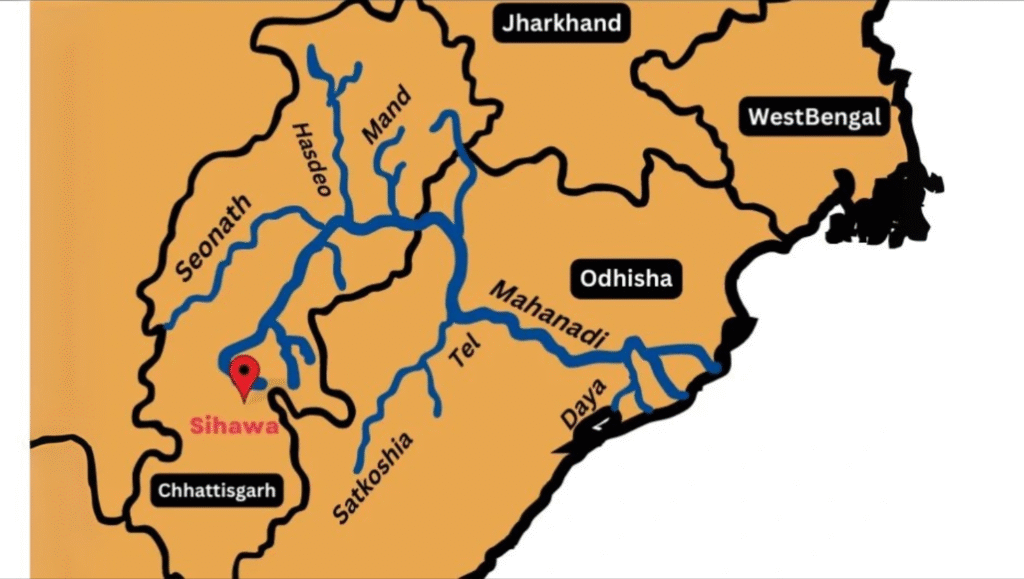Mahanadi Water Dispute: A Shift from Litigation to Dialogue
Syllabus: Geography, Polity (UPSC GS I & II)
Source: Hindustan Times
Context
After years of legal proceedings before the Mahanadi Water Disputes Tribunal, the states of Odisha and Chhattisgarh have agreed to seek a mutual resolution for sharing the waters of the Mahanadi River.
Mahanadi River – Overview
Importance:
The Mahanadi is a major east-flowing river in peninsular India. It is known for its high silt load, frequent historical floods, and agricultural relevance. The name comes from Sanskrit: ‘Maha’ (great) + ‘Nadi’ (river).
Geographic Spread
Origin:
- Near Pharsiya village, Dhamtari district, Chhattisgarh
- In the Nagri Sihawa Hills (~442 metres elevation)
Length:
- Around 900 km
States Covered:
- Chhattisgarh (upper and middle basin)
- Odisha (lower basin and delta)
- Minor areas in Jharkhand, Maharashtra, and Madhya Pradesh
Drainage:
- Drains into the Bay of Bengal, near Paradip (Odisha)
Basin Area:
- Around 1.32 lakh sq. km
Major Tributaries
Left Bank Tributaries:
- Seonath (Shivnath)
- Hasdeo
- Mand
- Ib
Right Bank Tributaries:
- Ong
- Tel
- Jonk
Key Features and Ecological Significance
- Hirakud Dam (Odisha):
One of the longest earthen dams in the world. Built for flood control, irrigation, and hydropower. - Satkosia Gorge:
A scenic and ecologically important region in the Eastern Ghats. - Delta System:
One of the largest deltas in India, shared with the Brahmani River, supporting farming, fishing, and port activity. - Biodiversity:
Rich in bird species, fish diversity, and tiger reserves.
Significance of the Recent Agreement
- From Dispute to Dialogue:
Reflects a move toward cooperative federalism in managing natural resources. - Role of Central Government:
A Joint Committee led by the Central Water Commission (CWC) is proposed to help reach a technical and fair solution. - Model for Other Disputes:
This initiative could be a guiding example for resolving other inter-state river disputes.











